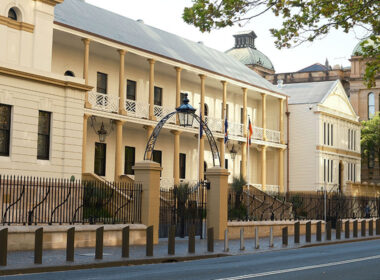National Legal Aid has released a new paper today, which proposes a law firm levy as a potential solution to the “chronic underfunding” that is placing severe pressure on Legal Aid Commissions across Australia.
The paper comes after the recent Independent Review of the National Legal Assistance Partnership report identified that Legal Aid Commissions, alongside the broader legal assistance sector, have been critically under-resourced for more than a decade and significant investment is needed to meet current demand.
It showed that an additional $484 million in funding is urgently needed to maintain and improve access to legal aid services for Australians. While the preferred solution is increased Commonwealth funding from general revenue, in the last 10 years the amount of Commonwealth funding for legal assistance has shrunk by 3 per cent and without action now, the gap between legal assistance need and funding will widen, and the costs of a dysfunctional system will grow.
The recent Justice on the Brink report commissioned by National Legal Aid revealed that an additional 16,000 grants are needed annually just to keep up with current demand and only 8 per cent of Australian households are currently eligible for legal aid. That means only those living in poverty are eligible for Legal Aid. This leaves many individuals, including victim-survivors of domestic and family violence, with no choice but to go into debt or make difficult compromises to avoid legal costs.
Katherine McKernan, Executive Director, National Legal Aid says the funding mechanism for legal assistance – the National Legal Assistance Partnership – has recently been reviewed and is in the re-negotiation process.
“We are hopeful that this will result in greater investment in family law grants of aid, raising the means test and increasing private practitioner fees,” McKernan says.
“[W]e are also looking at what other funding solutions there might be. The Impact Economics analysis provides some options for consideration – that may not be the whole solution – but part of the solution.”
The proposed legal sector levy is one of these funding options and would operate on a sliding scale.
Emily Millane at Impact Economics and Policy and co- author of the report highlighted that “Australia’s eight largest law firms in 2023 had a total revenue of $5 billion and based on a 10,000 staff count this represents around half a million dollars per head.”
She explains that the legal sector levy could be structured so that higher-income firms pay a larger share with a reduced levy for those that do legal assistance work and those firms that do more than 20 per cent legal assistance work would pay no levy.
Millane says this approach has “the benefit of bringing in income, but also increasing the number of available lawyers for legal aid and other legal assistance work”. Other funding options to be considered include directing gambling revenue to legal assistance funding and developing a “HECS style” loans scheme for clients.
“The loans scheme would not work for those under the poverty line, but it could be an option for those on low – middle incomes,” Millane says.
The report suggests that a 1 per cent levy on the $50 billion annual turnover of the gambling sector could be sufficient to cover the funding shortfall and would fall on the gaming venues rather than patrons.
“This is fairer than placing the burden onto individual gamblers, targeting institutions benefiting from gambling, and with deeper pockets,” the paper reads.
The report underscores the critical role of legal aid in supporting vulnerable Australians. With more than 32,000 grants of aid provided each year in family law matters, 86 per cent of which involve domestic violence risk, legal aid is essential for ensuring access to justice for those in need.
However, the reliance on private practitioners to deliver legal aid services has also been impacted, with fees remaining stagnant for more than a decade. This has made it increasingly difficult for Legal Aid Commissions to attract and retain lawyers, particularly in rural and remote areas, leading to service shortages and delays.
Mark Woods, Chair of the Access to Justice Committee at the Law Council of Australia and a legal aid lawyer has been representing legal aid clients for over three decades and has witnessed his colleagues resign from legal aid work to the point that the number of law firms available to take legal aid work has dropped from 17 to 10 in his regional community alone, despite a significant population increase.
“Legal aid work is highly rewarding but also very challenging due to the problems faced by people experiencing disadvantage and the processes involved in accessing the family law system,” Woods says.
He says the work makes a huge difference to people and communities, “but the suburban and regional local lawyers that do this work can’t be expected to take on the volume of this work with an hourly rate that is less than half of what the standard rate is.”
Read the options paper here.




